- New version of "The Great Gatsby" one of many attempts to bring classic to the screen
- Book's lyrical prose, point of view make adaptation difficult
- Movies are different art form, and filmmakers have to remember that, says producer
- "Gatsby" benefits from well-known title, marketing ties
(CNN) -- On paper, the 1974 version of "The Great Gatsby" had everything.
It starred Robert Redford, the biggest, most glamorous movie star of the era. The screenplay was by Francis Ford Coppola, coming off writing Oscars for "The Godfather" and "Patton." The art direction was sumptuous, and the costumes -- which helped launch a new craze for 1920s-inspired fashion -- were designed by the then little-known Ralph Lauren, among others.
And yet the movie, though a box-office success, fell far short of the novel. Critics at the time roasted it, and it's been largely forgotten since its release.
There are lots of reasons that the 1974 "Gatsby" hasn't become a film classic equal to the book's literary status. The actors were, perhaps, miscast: Redford a little too perfect given Gatsby's rough edges, Bruce Dern too unpolished for rich Yalie Tom Buchanan. Director Jack Clayton may have paid more attention to the opulent settings than the relationships between the characters.
And then there's the shadow of Fitzgerald himself, with his lyrical language, so enticing on the page and so difficult to translate onto celluloid.
But Hollywood hasn't given up. Like the green light across the bay that forever taunts the book's title character, F. Scott Fitzgerald's classic 1925 novel holds out the promise of a dream: turning the Great American Novel into the Great American Movie. After all, it has everything -- a love story, sex, money, crime, great themes, lush settings.
The latest attempt, a 3-D version starring Leonardo DiCaprio and directed by "Moulin Rouge's" Baz Luhrmann, opens Friday.

Luhrmann has steeped himself in both Fitzgerald and the Jazz Age. He immersed himself in Fitzgerald's biography. He read previous drafts of the novel. He even has a reason for using rock and hip-hip music on his soundtrack: The seemingly anachronistic sounds are the equivalent of jazz in the novel's 1922 setting, when the music was "referred to as an African-American fad," the director told The New York Times.
But does it matter? Is "Gatsby," finally, that dreaded word in Hollywood -- "unfilmable"?
"The language in 'Gatsby' is almost like poetry," says Louis Giannetti, emeritus film professor at Case Western Reserve University. "How do you translate that into cinematic terms?"
Entertainment vs. high school
It's never easy.
Novels and motion pictures are distinct forms of storytelling, points out Everest Entertainment's Tom Heller, who helped produced the films "Precious," "127 Hours" and the current "Mud." A book takes place largely in the reader's imagination; a movie makes concrete choices, down to the casting.
Moreover, it can be tough for a film to translate the internal thoughts of characters and narrators into action -- turning subtext into text, in other words. Len Cassuto, an English professor at Fordham University, says he admires the film version of "The Remains of the Day" for taking Anthony Hopkins' passive butler and turning him into a fascinating film character.
"The (actors) could bring that inner turmoil into sight nonverbally," he says. "It's a pretty big risk to write that as a movie."
Still, says Heller, any literary work can be made into a film, given the right hands. If there's a risk, he observes, it's when filmmakers adhere too closely to a classic or popular book, resulting in an airless dramatization -- not a full-bodied film.
"There's a danger that it can be perceived as something that's good for you," he says. "Films work best when they're extremely entertaining. An audience might look at a film that's adapted from a novel and think that they're in a high school class."
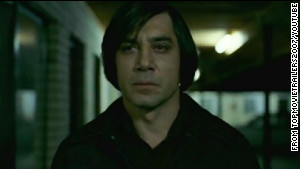
Indeed, it's a Hollywood truism that some of the best movies are made from energetic potboilers. "The Godfather" is usually Exhibit A: a fine, pulpy novel turned into a great film thanks to Coppola's attention to theme, photography and character.
Nevertheless, certain producers have been particularly eager to snap up prestigious literary properties and worry about the cinematic issues later. Scott Rudin, in particular, is well-known for his literary tastes, having optioned Cormac McCarthy's "No Country for Old Men," Michael Chabon's "The Amazing Adventures of Kavalier & Clay," Jonathan Safran Foer's "Extremely Loud and Incredibly Close" and Jonathan Franzen's "Freedom" over the years.
Not all of them have worked out, however.
Adapting to challenges
Indeed, it's not just literary pedigree that may make a book "unfilmable." Moviemakers may be wary of subject matter, technological challenges, even the mood. A talked-about book might only sell 50,000 copies; a movie has to sell millions of tickets.
So there's a reason Hollywood took the tragic ending of "The Natural" and turned it into a scene of feel-good fireworks. Who, besides a bunch of hubris-fascinated English majors, wants to see the book's (spoiler!) fallen, weeping Roy Hobbs "excluded from the game and all his records forever destroyed"?
Those challenges need not be a death sentence at the box office or with critics, however. "The Natural" had a successful run. John Ford's version of "The Grapes of Wrath" eliminated a symbolic suckling scene, toned down the politics, changed the ending and became a classic. McCarthy's brutal "No Country for Old Men" is full of horrific violence (not to mention the author's distinctive terse writing). Yet the Coen brothers managed to make an Oscar winner out of the material, helped in no small way by Javier Bardem's chilling performance as Anton Chigurh.
"Midnight Cowboy," "The English Patient," "The Lord of the Rings," "Life of Pi" -- all had their issues, whether cultural, literary or technological, and all ended up successful and award-winning films.
The key is that everybody has to be on the same page (pardon the pun), says screenwriter Karol Hoeffner, who's adapted works by authors such as Danielle Steel .
"For the best adaptations, you have a partnership," says Hoeffner, who teaches at Loyola Marymount University in Los Angeles. Moviemaking is a team effort, and if the screenwriter, director and producer are at loggerheads, the final product will suffer, she says.
And you have to follow your own muse, she adds. Hoeffner's original work, including books for young adults, is far different from Steel's romances, and she knew she'd have to make Steel's melodramatic dialogue more film-friendly.
"But," she says, "I was convinced I could tell the story."
Marketing muscle
Which brings us back to "Gatsby."

Luhrmann has the creative partnerships: Pal Craig Pearce wrote the screenplay and Luhrmann's wife, Catherine Martin, tackled the production design. He's tried a different angle, getting at "Gatsby's" famous distance by making Nick Carraway's character -- now in a sanitarium -- the novelist.
And, not unimportantly, he has the marketing muscle.
After all, a primary reason Hollywood keeps adapting certain novels is the built-in sales factor. "Gatsby" is on countless high school reading lists and sells hundreds of thousands of copies a year. There's a curious audience already waiting.
In addition, the book is being backed by a marketing blitz that would make Fitzgerald, a former advertising man, proud. Brooks Brothers, Tiffany, hotels, even an ice-cream manufacturer have climbed aboard the "Gatsby" bandwagon.
Will all that appeal to a summer movie audience generally filled with teenagers?
It's certainly shrewd, says Mary Simonson, a film and media studies professor at Colgate University.
"As I watched the trailer, I thought, 'This is for 16-year-olds,' " she says. "All of this is about gearing this toward high school and college students who may not have any notion of who Fitzgerald was or what the book actually was.
"They're not going to care too much about whether this is a well-done adaptation," she adds. "They're going to care about whether it's a Hollywood blockbuster."
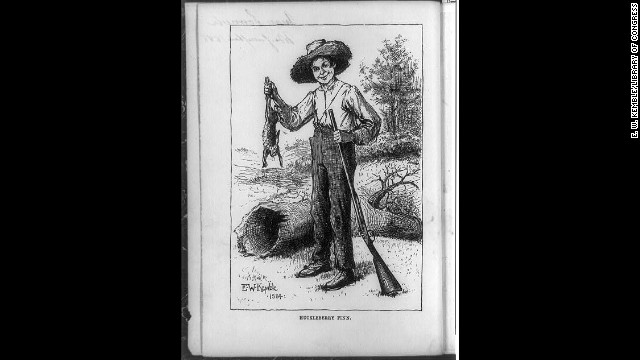 Mark Twain's "The Adventures of Huckleberry Finn" has been filmed several times, but no version has captured Twain's wise, knowing wit. Here are some other novels that haven't translated well to the screen or have never made it at all:
Mark Twain's "The Adventures of Huckleberry Finn" has been filmed several times, but no version has captured Twain's wise, knowing wit. Here are some other novels that haven't translated well to the screen or have never made it at all:
 Theodore Dreiser's 1912 novel, "The Financier," has some movie-friendly details -- it's even based on a scandalous true story -- but Hollywood has never tackled it.
Theodore Dreiser's 1912 novel, "The Financier," has some movie-friendly details -- it's even based on a scandalous true story -- but Hollywood has never tackled it.
 "Babbitt," Sinclair Lewis' 1922 character study of a Midwest businessman, was made into silent and sound films, but neither has stood the test of time.
"Babbitt," Sinclair Lewis' 1922 character study of a Midwest businessman, was made into silent and sound films, but neither has stood the test of time.
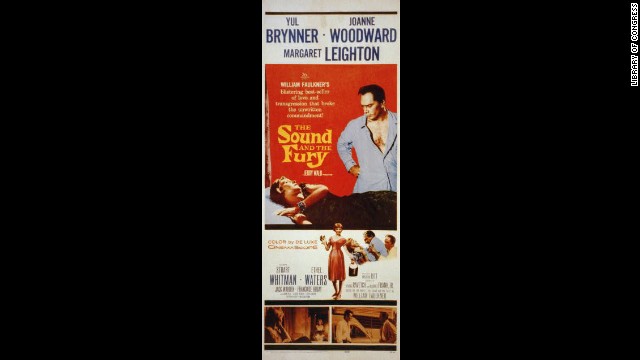 Martin Ritt's 1959 film adaptation of William Faulkner's complex 1929 classic "The Sound and the Fury" bears little resemblance to the book.
Martin Ritt's 1959 film adaptation of William Faulkner's complex 1929 classic "The Sound and the Fury" bears little resemblance to the book.
 John Dos Passos' trilogy about early 20th-century America would seem to be perfect for Hollywood -- it even uses film-style techniques -- but nobody's ever adapted it for the screen.
John Dos Passos' trilogy about early 20th-century America would seem to be perfect for Hollywood -- it even uses film-style techniques -- but nobody's ever adapted it for the screen.
 Most of Nobel Prize winner Saul Bellow's works have been film-resistant -- even "The Adventures of Augie March," his classic 1953 novel about "an American, Chicago born."
Most of Nobel Prize winner Saul Bellow's works have been film-resistant -- even "The Adventures of Augie March," his classic 1953 novel about "an American, Chicago born."
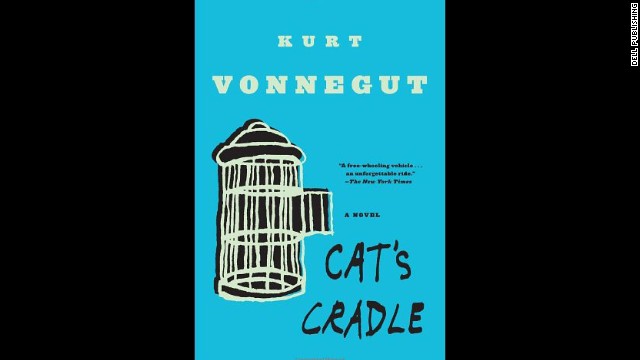 Atomic scientists, strange religions, the end of the world -- Kurt Vonnegut's 1963 novel, "Cat's Cradle," would seem perfect for a black comedy. (Very, very black.) Leonardo DiCaprio's production company optioned the book in 2005.
Atomic scientists, strange religions, the end of the world -- Kurt Vonnegut's 1963 novel, "Cat's Cradle," would seem perfect for a black comedy. (Very, very black.) Leonardo DiCaprio's production company optioned the book in 2005.
 Philip Roth's raucous 1969 best-seller, "Portnoy's Complaint," contains at least one gross-out worthy scene. But the 1972 film, written and directed by Ernest Lehman, laid an egg. Time for another shot?
Philip Roth's raucous 1969 best-seller, "Portnoy's Complaint," contains at least one gross-out worthy scene. But the 1972 film, written and directed by Ernest Lehman, laid an egg. Time for another shot?
 Filmmakers may be put off by the Jungian overtones of Robertson Davies' classic "Fifth Business," but it has a finale that is powerfully cinematic.
Filmmakers may be put off by the Jungian overtones of Robertson Davies' classic "Fifth Business," but it has a finale that is powerfully cinematic.
 Could anyone do justice to Thomas Pynchon's complex 1973 work, "Gravity's Rainbow"? A German team used elements for a 2002 film called "Prufstand VII." But maybe Pixar could do a film about Byron the Bulb. (Paul Thomas Anderson is adapting another Pynchon work, "Inherent Vice.")
Could anyone do justice to Thomas Pynchon's complex 1973 work, "Gravity's Rainbow"? A German team used elements for a 2002 film called "Prufstand VII." But maybe Pixar could do a film about Byron the Bulb. (Paul Thomas Anderson is adapting another Pynchon work, "Inherent Vice.")
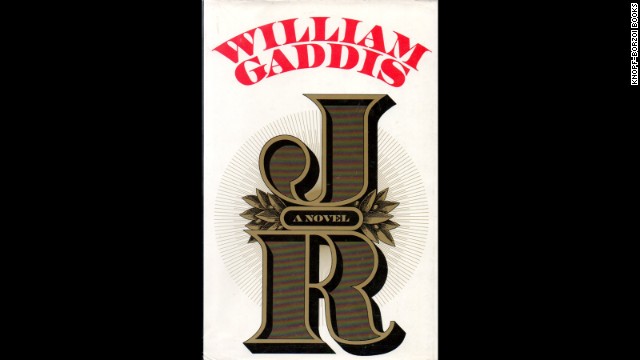 William Gaddis' challenging 1975 novel about an 11-year-old business mogul, "J R," is almost all dialogue -- a "blizzard of noise," said one reviewer.
William Gaddis' challenging 1975 novel about an 11-year-old business mogul, "J R," is almost all dialogue -- a "blizzard of noise," said one reviewer.
 David Foster Wallace's 1996 novel, "Infinite Jest," has yet to be adapted for the screen -- but
David Foster Wallace's 1996 novel, "Infinite Jest," has yet to be adapted for the screen -- but  With its rich plot about comic-book artists, Michael Chabon's Pulitzer Prize winner, "The Amazing Adventures of Kavalier & Clay," would seem to be a natural for adaptation. It's reportedly in development as a TV series, according to the Internet Movie Database.
With its rich plot about comic-book artists, Michael Chabon's Pulitzer Prize winner, "The Amazing Adventures of Kavalier & Clay," would seem to be a natural for adaptation. It's reportedly in development as a TV series, according to the Internet Movie Database.
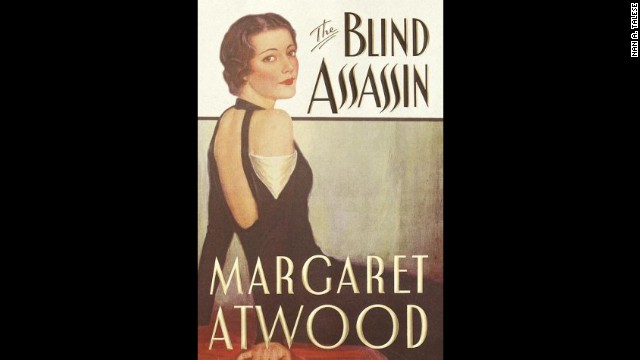 "The Handmaid's Tale" made the big screen and other Margaret Atwood works have been adapted for television, but her 2000 Booker Prize winner, "The Blind Assassin," has yet to make the jump.
"The Handmaid's Tale" made the big screen and other Margaret Atwood works have been adapted for television, but her 2000 Booker Prize winner, "The Blind Assassin," has yet to make the jump.
 Roberto Bolano's rambling "2666," which
Roberto Bolano's rambling "2666," which  Jonathan Franzen's "The Corrections" has been in and out of development hell for years, even canceled at the eleventh hour by HBO; his 2010 best-seller, "Freedom," about an American family torn by politics and culture, has been optioned by Scott Rudin.
Jonathan Franzen's "The Corrections" has been in and out of development hell for years, even canceled at the eleventh hour by HBO; his 2010 best-seller, "Freedom," about an American family torn by politics and culture, has been optioned by Scott Rudin.















